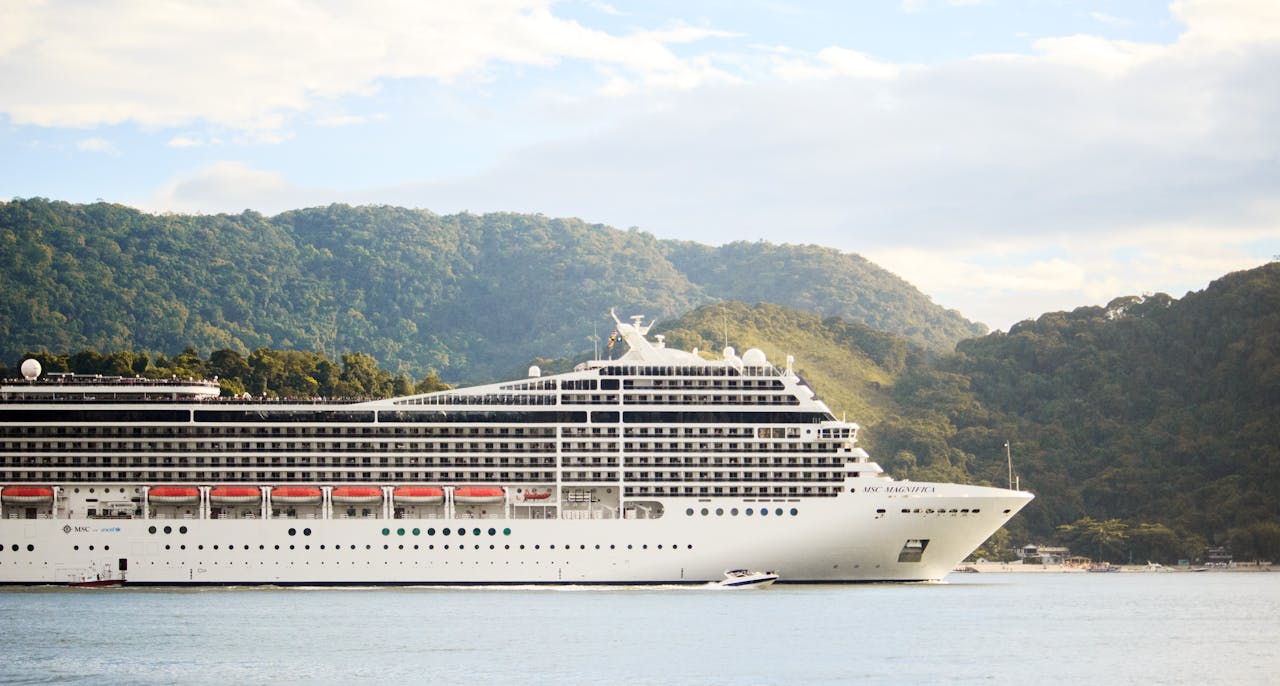Choosing Between Cruise Travel Insurance and Boat Trip Insurance: What’s the Difference?
Imagine this: you’re about to embark on a Caribbean cruise with multiple stops, or maybe just a one-day sailing trip along the Amalfi Coast. Both experiences promise adventure, but both also carry risks—storms, delays, injuries, or even medical evacuations at sea. That’s where travel insurance comes in. But should you buy cruise travel insurance vs boat trip insurance? Aren’t they the same thing?
Not exactly. While both policies protect you on the water, the coverage details, costs, and even claim processes can vary significantly. In this guide, we’ll break down the differences, explore what’s included in each, and help you figure out which one makes sense for your journey.
Why Insurance Matters More at Sea Than on Land
Unlike land-based vacations, sea trips come with unique challenges:
- Limited access to hospitals (ship doctors are not specialists and facilities are basic).
- Risk of itinerary changes due to weather, port closures, or mechanical issues.
- Higher evacuation costs: an airlift from a ship can run $30,000–$100,000 depending on distance.
- Prepaid, non-refundable costs (cruise cabins, shore excursions, or private yacht rentals).
According to Cruise Lines International Association (CLIA), over 30 million people took cruises in 2024, a number projected to rise another 5% in 2025. With more travelers at sea, insurance providers have expanded specialized products, making it essential to choose wisely.
Cruise Travel Insurance vs Boat Trip Insurance: Key Differences
Here’s a straightforward comparison:
| Feature | Cruise Travel Insurance | Boat Trip Insurance |
|---|---|---|
| Target Travelers | Multi-day cruise passengers | Day trips, sailing tours, private charters |
| Trip Cancellation Coverage | Strong focus; protects cruise fare, excursions, airfare | Limited; covers mostly trip interruption |
| Medical Coverage | High limits (often $250,000–$500,000) due to offshore risk | Lower limits; assumes proximity to land |
| Evacuation & Repatriation | Usually included, up to $1M | Optional, sometimes capped lower |
| Adventure Activities | Optional add-ons for scuba, snorkeling | Often included for casual water activities |
| Cost Range (per person) | $100–$300+ for a weeklong cruise | $20–$60 for short trips |
| Best For | Cruise ship travelers with prepaid costs | Casual sailing, half-day or full-day tours |
Deep Dive: What Cruise Travel Insurance Covers
Cruise-specific insurance typically includes:
- Trip Cancellation & Interruption
- Covers illness, family emergencies, or weather disruptions.
- Example: If your ship skips three ports due to a hurricane, some policies reimburse prepaid excursions.
- Emergency Medical Treatment
- Essential since onboard infirmaries are limited.
- A broken arm at sea could cost $2,500+, while surgery may require evacuation.
- Medical Evacuation
- Helicopter evacuation from open waters may exceed $80,000. Cruise plans often cover this fully.
- Missed Connection Coverage
- If your flight is delayed and you miss ship departure, insurance pays for rejoining at the next port.
- Baggage Protection
- Lost luggage in transit or on board is covered.
Deep Dive: What Boat Trip Insurance Covers
Boat trip insurance is leaner and cheaper, focusing on shorter journeys:
- Accident & Medical Coverage
- Typically up to $50,000–$100,000—sufficient for near-shore incidents.
- Trip Interruption
- Refunds if weather forces cancellation or early return.
- Personal Liability
- Important for private yacht rentals—covers damages or injuries you might cause.
- Adventure Sports
- Many policies already cover snorkeling, fishing, and kayaking.
Real-Life Scenarios
Case 1: Cruise Emergency in the Caribbean
- Traveler: James, 62, U.S.
- Incident: Heart attack on a 7-day cruise.
- Outcome with insurance: Covered $85,000 evacuation + $40,000 hospital stay.
- Without insurance: Family debt exceeded $120,000.
Case 2: Sailing Excursion in Greece
- Traveler: Maria, 29, Spain
- Incident: Boat engine failure, trip canceled.
- Outcome with boat trip insurance: Reimbursed €180 excursion fee.
- Without insurance: No refund, lost money.
Cost Breakdown: Cruise vs Boat Trip Insurance (2025)
| Traveler Type | Cruise Insurance (7 days) | Boat Trip Insurance (1 day) |
|---|---|---|
| Solo traveler, age 30 | $110–$160 | $20–$30 |
| Couple, ages 45 & 42 | $240–$320 | $40–$55 |
| Family of four with kids | $420–$580 | $70–$100 total |
| Senior traveler, age 70 | $350–$500 | $40–$60 |
Cruise policies cost more because they cover higher risks, longer durations, and prepaid costs.
How to Choose the Right Policy in 2025
- Match insurance to trip type – Cruise = comprehensive, boat trip = basic.
- Consider medical needs – Seniors or those with conditions should prioritize high medical coverage.
- Check activity coverage – Divers and snorkelers need add-ons.
- Look for evacuation coverage – Especially if traveling far from shore.
- Compare insurers – Sites like Squaremouth or InsureMyTrip make side-by-side comparisons easy.
FAQs: Cruise Travel Insurance vs Boat Trip Insurance
Q1: Do cruise lines offer their own insurance?
Yes, but independent policies often provide better coverage and flexibility.
Q2: Is boat trip insurance worth it for a half-day excursion?
Yes, especially if it’s expensive, non-refundable, or involves activities like snorkeling.
Q3: Will my credit card insurance cover cruises?
Rarely. Most cards don’t include high medical or evacuation coverage needed at sea.
Q4: Can I buy cruise insurance after booking?
Yes, but “Cancel For Any Reason” add-ons usually require purchase within 14–21 days of booking.
Q5: Are pre-existing conditions covered?
Some policies cover them if bought early and medical conditions are stable.
Final Thoughts
When it comes to cruise travel insurance vs boat trip insurance, the choice depends on the nature of your trip. A week-long Caribbean cruise requires robust protection—think medical evacuation, trip interruption, and cancellation. On the other hand, a single-day sailing tour needs only lighter coverage. The key is matching the plan to your trip’s risks and costs.
Spending $100 on the right policy can save you tens of thousands if something goes wrong at sea.



